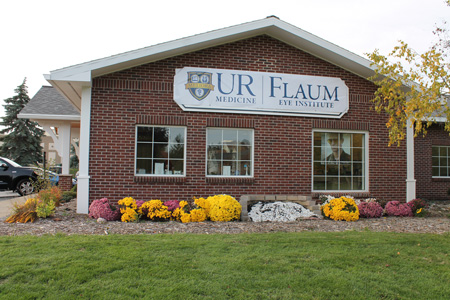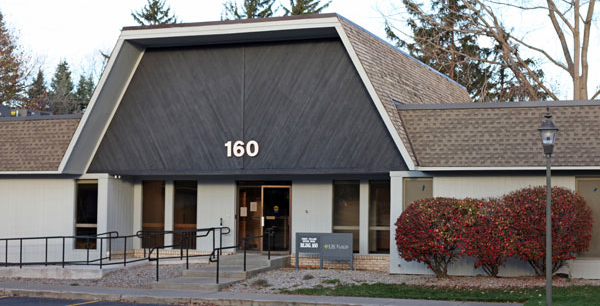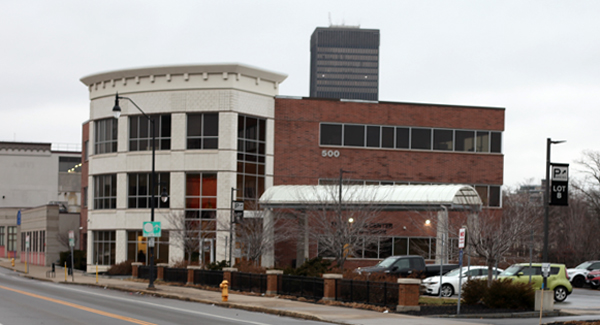Glaucoma
Make Appointments & Get Care
What is Glaucoma?
Glaucoma is a leading cause of blindness. It is often characterized by increased eye pressure, which causes damage to the optic nerve and retinal nerve fibers. This pressure may be caused by normally occurring fluid in the eye not being able to drain out as fast as it is being replaced. It is a serious eye disease that, left untreated, can lead to vision loss and blindness.
Many forms of glaucoma do not show symptoms because vision loss is peripheral and may progress slowly. If the disease is diagnosed and treated early, it can be managed, like high blood pressure, and permanent vision loss can be prevented.
People most at risk for glaucoma are:
- Older adults
- African Americans over the age of 40
- People taking steroid medications
- People with a family history of glaucoma
- Previous eye injury
- People who are very nearsighted or farsighted
- History of diabetes or hypertension
Common Types of Glaucoma
- Acute Angle Closure Glaucoma. Sudden closure of the eyes peripheral angle closure, characterized by a rapid increase in intraocular often causing pain, nausea, blurred vision and halos or rainbows around lights
- Primary Angle Glaucoma. The iris obstructs the eyes drainage angle in a slow progressive fashion
- Primary Open Angle Glaucoma. The drainage is open but fluid does not properly drain for some unknown reason
- Psuedoexfoliation Glaucoma. Deposits of a fibrous material may contribute to obstruct fluid drainage
- Pigmentary Glaucoma. Pigment from the iris obstructs the eye’s drainage system
- Angle Recession Glaucoma. Scar tissue from previous injury to the eye obstructs fluid outflow
- Neovascular Glaucoma. Other eye diseases can cause the growth of unwanted blood vessels inside the eye. These can affect the drainage structures
- Normal Tension Glaucoma. Damage to the optic nerve develops despite pressure in a normal range
- Pediatric Glaucoma. Childhood glaucoma occurs in babies and in young children usually caused by developmental problems
UR Medicine's Treatments for Glaucoma
At UR Medicine’s Flaum Eye Institute, we conduct a series of painless tests and exams to check for glaucoma.
Glaucoma can’t be cured, but early treatment can often control it. Treatment may include:
- Medicines to reduce pressure in the eye
- Surgery to create a new opening for fluid to leave the eye and reduce pressure or improve existing structures' ability to drain fluid
- Laser surgery
- Drainage tube to help drain fluid
What Sets Us Apart?
We have the most extensive and up-to-date array of diagnostic instrumentation to detect glaucoma, located at many of our locations. Screening for glaucoma is a component of all our routine eye exams. Many of our general eye care providers are skilled in diagnosing and providing early treatment for glaucoma. More difficult to treat disease may be referred to our two fellowship-trained specialists who are experts in the medical and surgical management of glaucoma.
Our main facility includes our own surgery center on the second floor of Strong Memorial Hospital, just below the Eye Institute’s faculty practice clinic. We have a second ambulatory surgery center located on Sawgrass Drive where we also perform surgical procedures related to glaucoma.
We’re also part of National Clinical Trials and are ranked in the top 20 in eye research funding in the United States, including an NIH-funded glaucoma research program. So, you can be assured that our care is informed by the latest scientific discoveries.
Providers
Locations
View All LocationsWe serve you in the Rochester metropolitan area and surrounding region.
View All Locations6 locations
Strong Memorial Hospital
210 Crittenden Boulevard
Rochester, NY 14642
1701 Lac De Ville Boulevard
Rochester, NY 14618
45 Liberty Street, Suite 3
Batavia, NY 14020
Tobey Village Office Park
160 Office Parkway
Pittsford, NY 14534
500 South Clinton Avenue, Suite 104
Rochester, NY 14620
Shares a parking lot with Noyes building
48 East South Street, Suite 110
Geneseo, NY 14454



